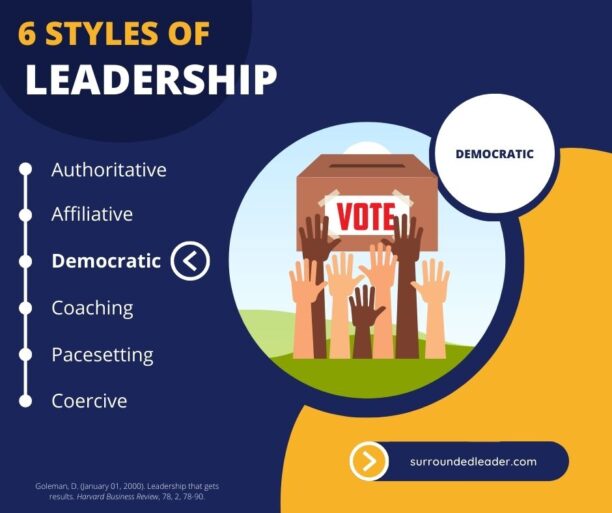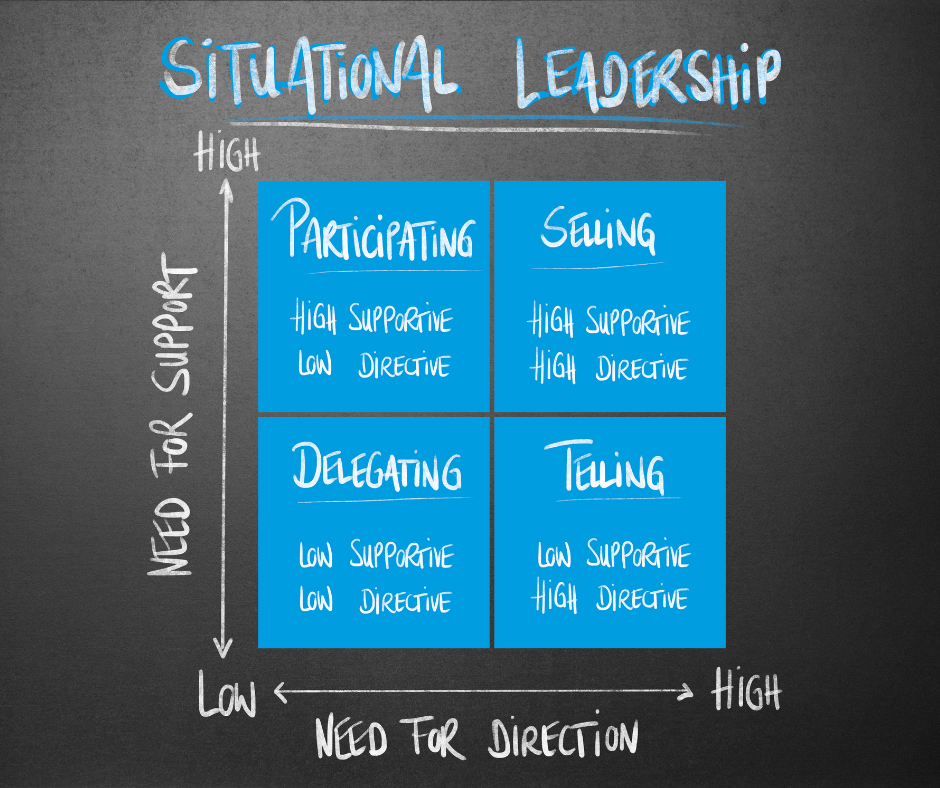In the Harvard Business Review article Leadership That Gets Results, Daniel Goleman lists six effective leadership styles. Goleman’s research indicates democratic leadership is the third most effective style in generating positive outcomes. Democratic leaders truly seek to give a voice to everyone in the process.
According to Goleman, leaders with this style often ask, “what do you think?”
Democratic leadership has an almost utopian ring to it. What could be better than a system that allows everyone to have a voice? This style does correlate with positive outcomes. However, watch for four potential pitfalls:
The Loudest Voice ≠ the Best Solution
Some walk into a room and instantly become the life of the party. For others, please leave us alone to eat our thistles in peace.
Democratic leaders attempt to give a voice to everyone they lead. However, there is one challenge with achieving this goal. A hidden force impacts many teams:
“Extrovert Ideal – the omnipresent belief that the ideal self is gregarious, alpha, and comfortable in the spotlight. The archetypal extrovert prefers action to contemplation, risk-taking to heed-taking, certainty to doubt. He favors quick decisions, even at the risk of being wrong.” – Susan Cain
Those that don’t conform to the extrovert ideal may be more reluctant to voice their opinions, especially in group settings. Consequently, the best ideas often do not make it to the discussion. They may never see the light of day.
While the democratic leader attempts to give everyone a voice, extroverted ideas are naturally amplified over the introverted.
Effective leaders know that the best solutions might require some deeper mining. It might require mining those ideas from those reluctant to challenge their charismatic peers.
The loudest may not equal the best.
The Cool Kids and the Rebels
Take a moment to think back to your middle school or high school days. Were any behaviors during this time driven by what others might have thought? If we are honest, those around us influenced many of our decisions.
Subconsciously, we gave others a voice in selecting our clothes, music, cars, and even our food. If someone we admired did things a certain way, we mimicked their behavior.
A few of us fell into a different group. We were the rebels. If the cool kids were doing it, we did the opposite. We were independent thinkers. Or were we? In reality, others still influenced us. The only difference was the direction of influence.
Unfortunately, the cool kid and rebel effect doesn’t magically end after high school. To some degree, we all care what those around us think.
The democratic leader must be aware of the impact of the cool kids and the rebels. Just a few individuals might begin driving a process that should give a voice to the masses.
Asch, Disney, and Lemmings
In the 1950s, Solomon Asch conducted research that displayed the powerful pull of our willingness to conform. The Asch experiments found almost 75% of people choose to conform, even when they believe others are incorrect!
Lemmings are classic examples of blind conformity. But, ironically, the myth that is responsible for associating these cute, furry creatures with conformity is false. The behavior that gave lemmings a bad rap was entirely staged by Disney in the 1950s film White Wilderness.
While Brian Vallee debunked the lemming effect in 1983, many still associate lemmings with blind conformity. I spent hours trying to save these helpless creatures from their demise in the 1990s video game. Even Apple gave a nod to the lemming effect with their 1985 Super Bowl ad.
You might say we were lemmings when it came to believing the myth of the lemming effect.
We are not the first society impacted by conformity, and we will not be the last.
Democratic leaders must watch for the lemming effect. At times the will of the masses may have very little to do with the facts. Instead, the desire to conform may be steering the ship.
Battle Scars
Diverse backgrounds, ideas, and skills allow a team to function at a higher level than the sum of the parts. However, with that said, this diversity will also bring conflict.
All healthy teams will encounter conflict.
“Peace is not absence of conflict, it is the ability to handle conflict by peaceful means.” – Ronald Reagan
Teams should not strive to avoid conflict. Instead, they must embrace healthy conflict. Healthy conflict will lead teams toward a deeper understanding of differing opinions. In addition, healthy conflict can produce more innovative solutions.
Unfortunately, many teams struggle to engage in conflict without wounding their teammates. We shift tactics when we feel unheard.
For example, we exaggerate or minimize to prove our point.
Shame or controlling behaviors shut down our opposition.
The wounds we inflict from our words can last far beyond the debate.
Democratic leaders must lead their teams through conflict by clearly defining the rules of engagement. Conflict must be centered around gaining a deeper understanding of facts. We can not allow debate to deteriorate into personal attacks. One of the best ways to overcome this pitfall is to help our teams master their crucial conversation skills.
Effective Democratic Leadership
The democratic leadership approach certainly has potential pitfalls. However, the democratic leadership style can be very effective in many situations. Of the six Goleman styles, it is best to give those we lead a voice.
It is valuable when leaders are unsure about the direction and need to consider many different ideas.
However, it is less effective when leading those lacking knowledge in the decision areas. We should also avoid this approach during times of crisis.
This approach brings differing options together through active participation. The democratic leader truly seeks to give a voice to everyone in the process. When we account for the four pitfalls common with style, we can effectively lead with this approach.
Read about other leadership styles here.




